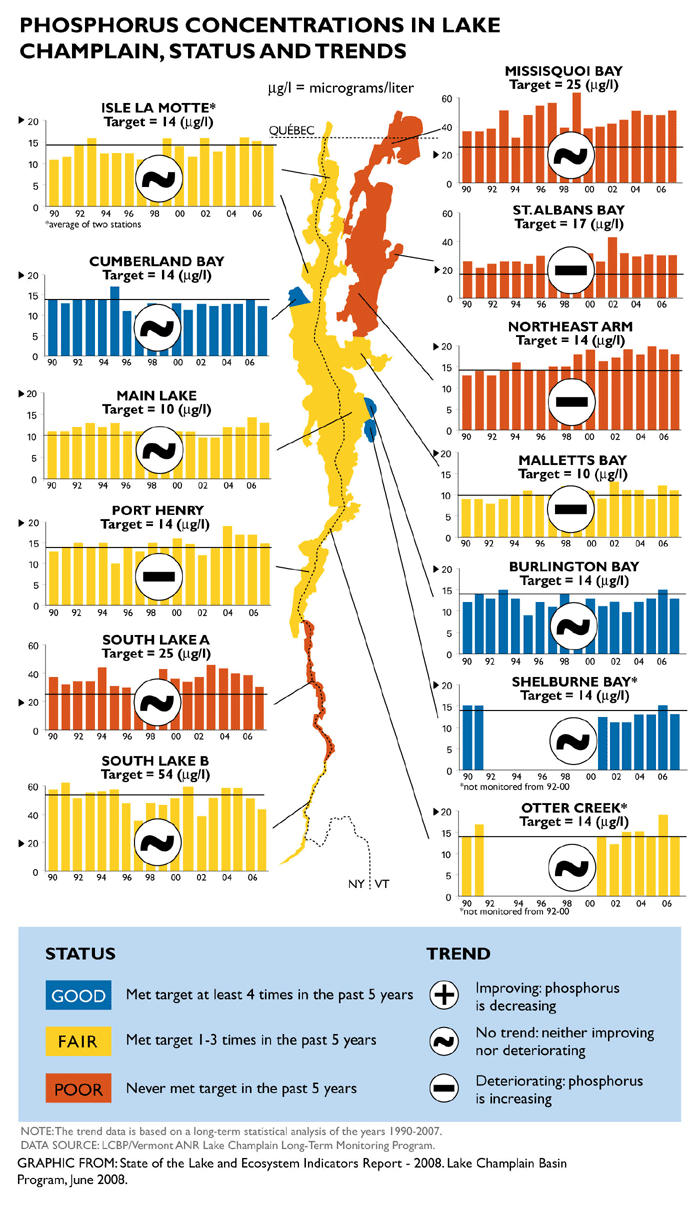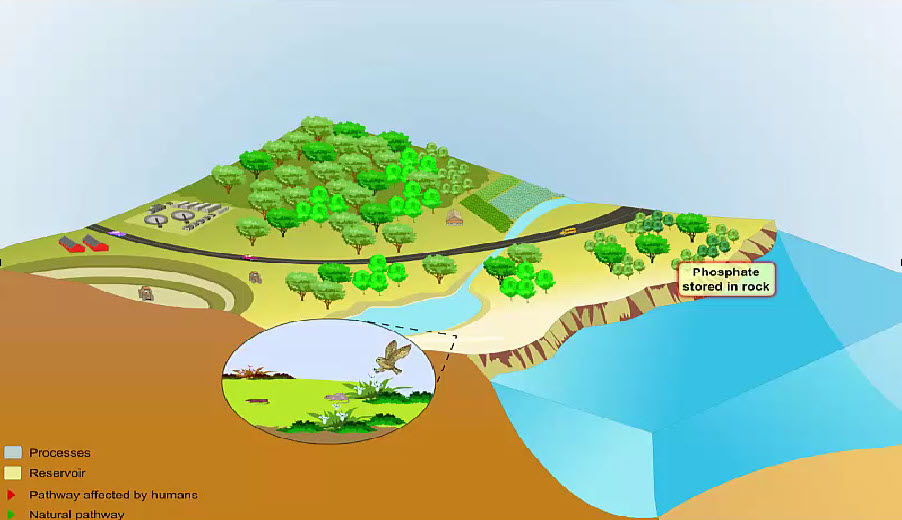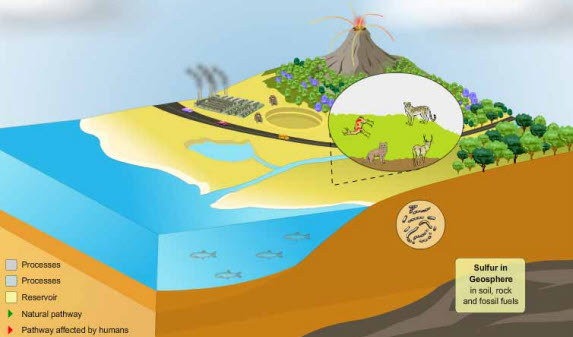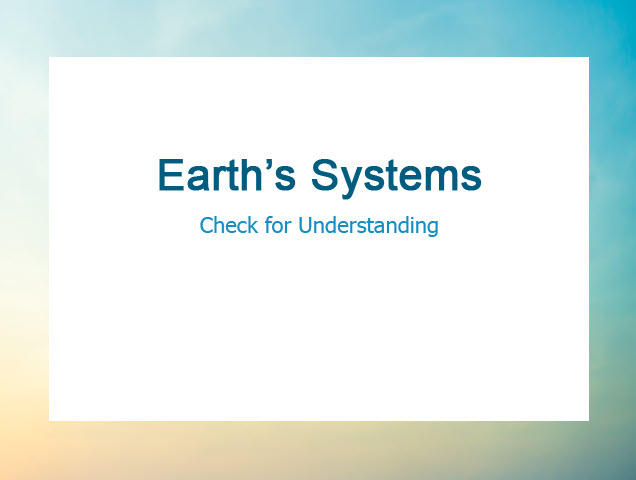Phosphorus and Plant Growth
Phosphorus is very important for plant growth. In fact, often it is the limiting factor controlling plant growth. Let's talk to Fatou, who lives in rural Senegal and depends on her garden for food, to see what she knows about the value of phosphorus for the growth of plants.
Click the image below.
Text Version
The Phosphorus Cycle
The phosphorus cycle is very slow compared to the other biogeochemical cycles. Phosphorus often gets trapped for millions of years in deep ocean sediments after being washed into the ocean from rivers and streams. Click the image to watch the phosphorus cycle animation below.
Which major reservoir was used in all three other cycles you've learned about, but is not part of the phosphorus cycle?
Click the image below.
Text Version
If you said the atmosphere, you're right! The phosphorus cycle does not include the atmosphere. The largest reservoir for phosphorus is terrestrial rocks and ocean bottom sediments.
Plate tectonics. The movement of plates can expose rocks and allow them to be weathered and eroded away again, releasing phosphates back into the cycle.
Humans and The Phosphorus Cycle
Lake Champlain is a long, thin lake on the border between Vermont and New York. Water quality tests have measured phosphorus levels In the lake from 1990 to 2007. Take a look at the data from these tests below.

The Sulfur Cycle
What do bogs, volcanoes, and sewers have in common? They are all sources of sulfur! Let's take a look at the five major reservoirs for sulfur by examining the images below.
Click the image below.
- Soil, Rock, Fossil Fuels
Most sulfur is stored in rocks, minerals, and sediments buried deep underground.
- Ocean Sediments
Deep ocean sediments hold sulfate (SO442-) salts where they can remain trapped for millions of years.
- Atmosphere
Sulfur enters the atmosphere in many ways; sea spray, dust storms, forest fires, volcanoes, and from decomposing organic matter in swamps, bogs, and tidal flats.
- Animals
Specialized bacteria that live in oxygen-deficient environments like swamps, bogs, and tidal flats convert sulfur from one form to another. Marine algae produce large amounts of sulfide (S2-)compounds. Animals obtain sulfur by eating plants that contain sulfur.
- Plants
Plants absorb sulfate ions from the atmosphere and incorporate them into many proteins.
Click the image below to look at how sulfur moves through these reservoirs.
Text Version
Earth's Sustainable Cycles
Let's test your understanding of the sulfur and phosphorus cycle.
Click the image below.
Text Version
Earth's Sustainable Cycles

All of Earth's major life support systems are involved in the cycling of nutrients through the biogeochemical cycles. These cycles are one of Earth's secrets to sustainability. They depend on energy from the sun and the water cycle to drive nutrient movement; they also require a high level of biodiversity among plants and animals that serve as reservoirs for many nutrients. They also involve population control to some degree, as many depend on decomposing matter to cycle nutrients from one reservoir to another. And, of course, you remember that one of the principles of sustainability is nutrient cycling itself! If we are to work towards sustainability and the health of the planet, it's crucial that we limit our interference with Earth's nutrient cycles.
There is growing evidence that these biogeochemical cycles are getting out of sync and therefore threatening one of the aspects of Earth's sustainability. Read the Earth's Biogeochemical Cycles, Once in Concert, Falling Out of Sync article from the National Science Foundation to learn more.
Rreview the important concepts and skills you learned in this chapter and then proceed to the earth's Structure and Systems Quiz. review the important concepts and skills you learned in this chapter and then proceed to the earth's Structure and Systems Quiz.
Click the image below.
Text Version
 Journal Reflection: Human Activities and Nutrient Cycles
Journal Reflection: Human Activities and Nutrient Cycles
What can we do to limit our interference with Earth's biogeochemical cycles? Identify and describe at least five specific things we can do to prevent disturbing the normal functioning the Earth's nutrient cycles. Write down these five things in your science journal.
 Graded Assignments
Graded Assignments
Congratulations on completing this section! In this section you learned about:
- Explain how geological processes affect ecosystem formation and function.
- Explain the cycling of water, carbon, nitrogen, phosphorus, sulfur and other nutrients in ecosystems. Please return to your Schoology classroom L2 - Earth Structure and Systems folder to complete any graded assignments for this section.











